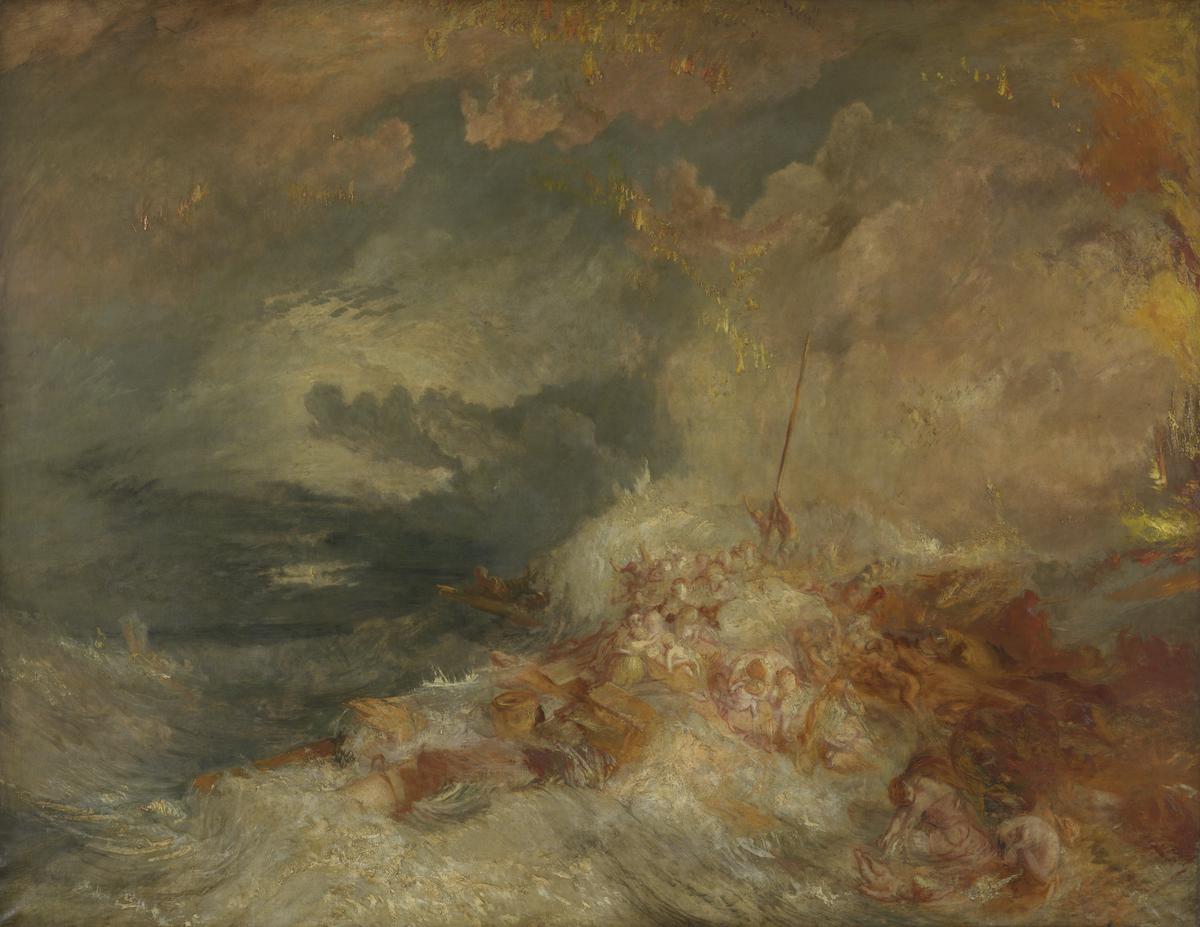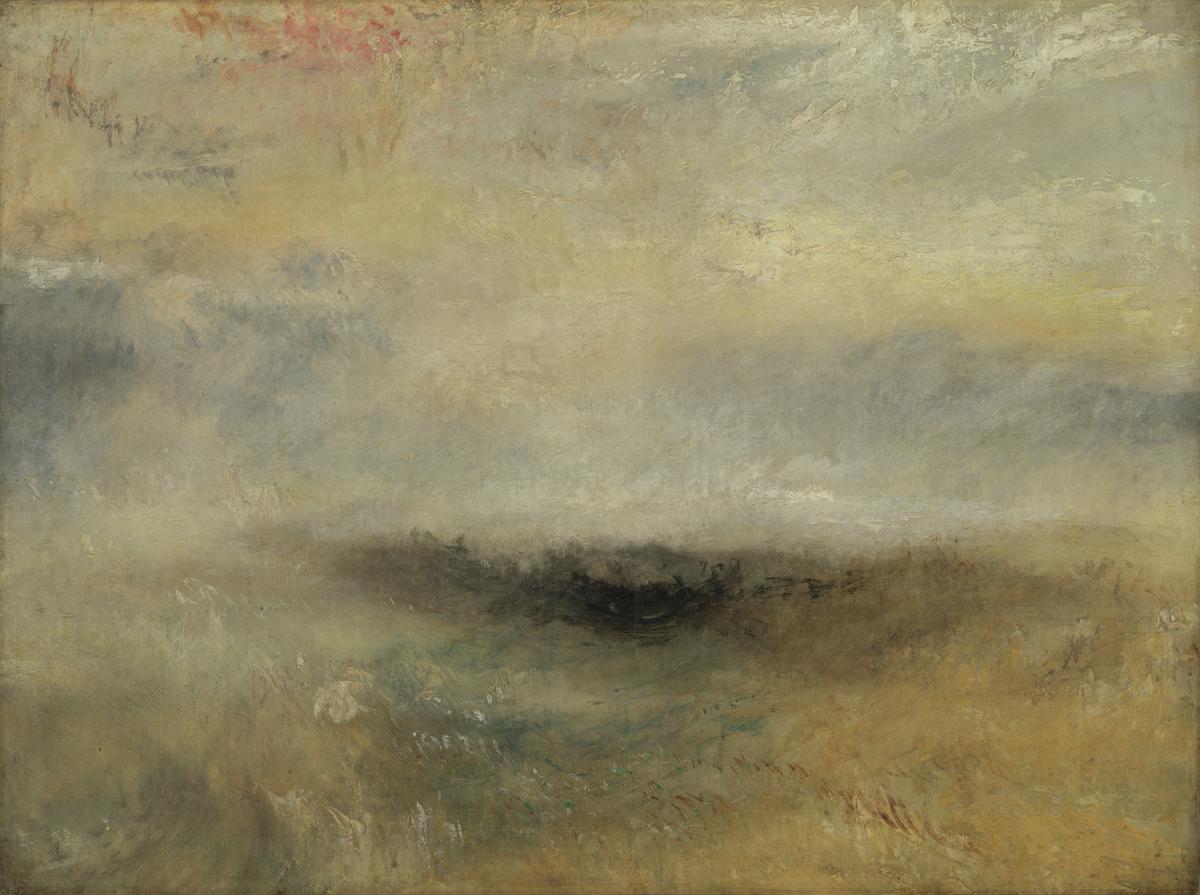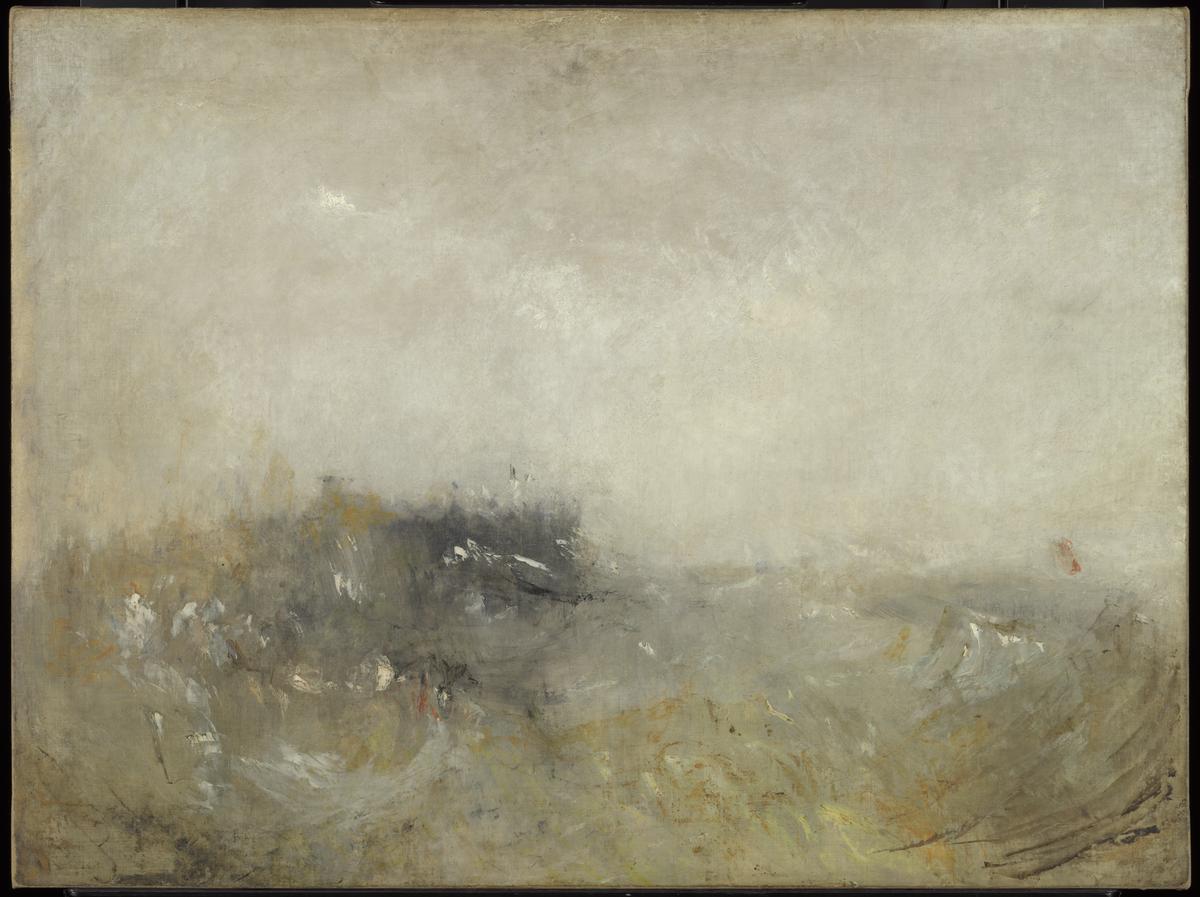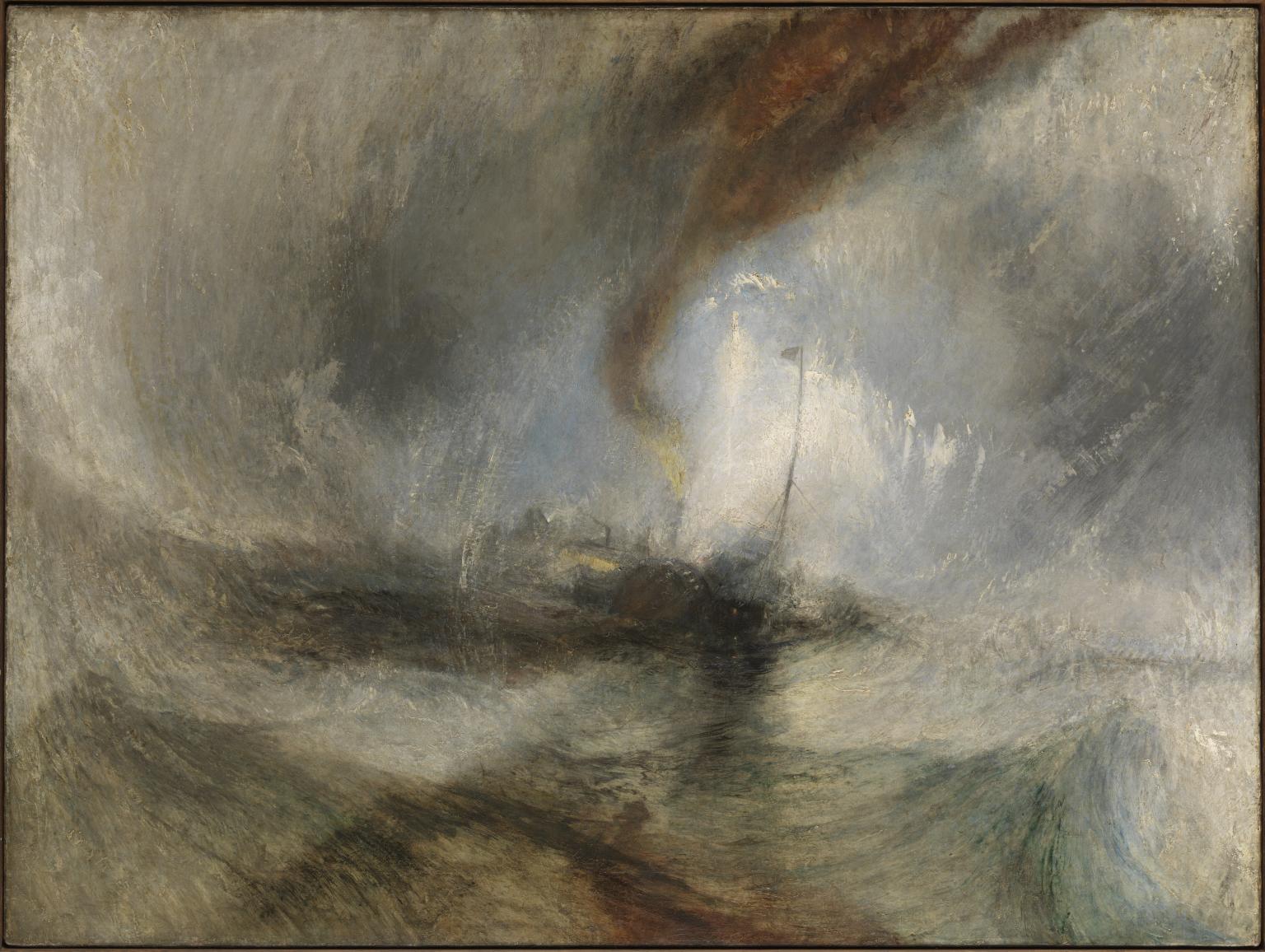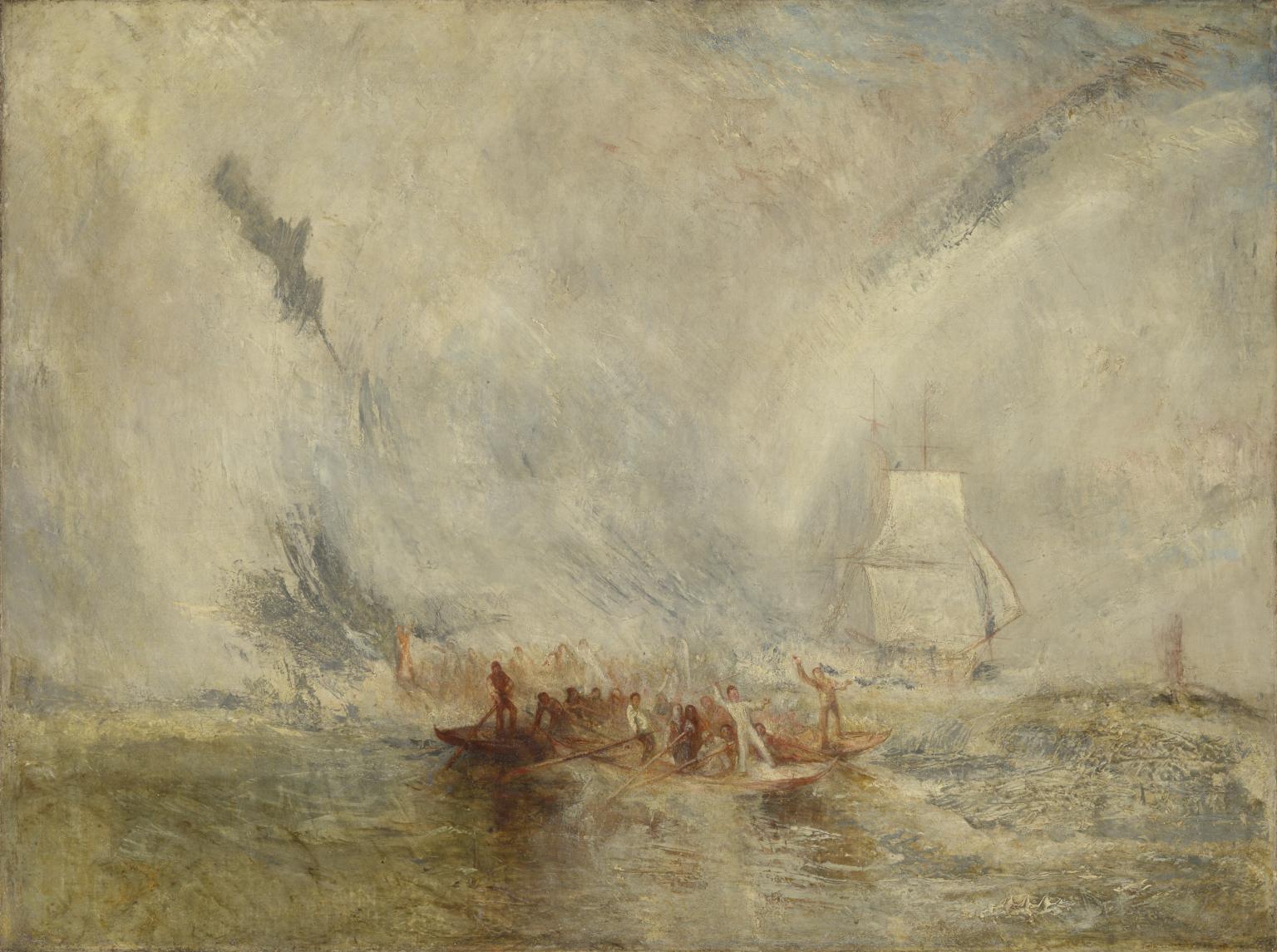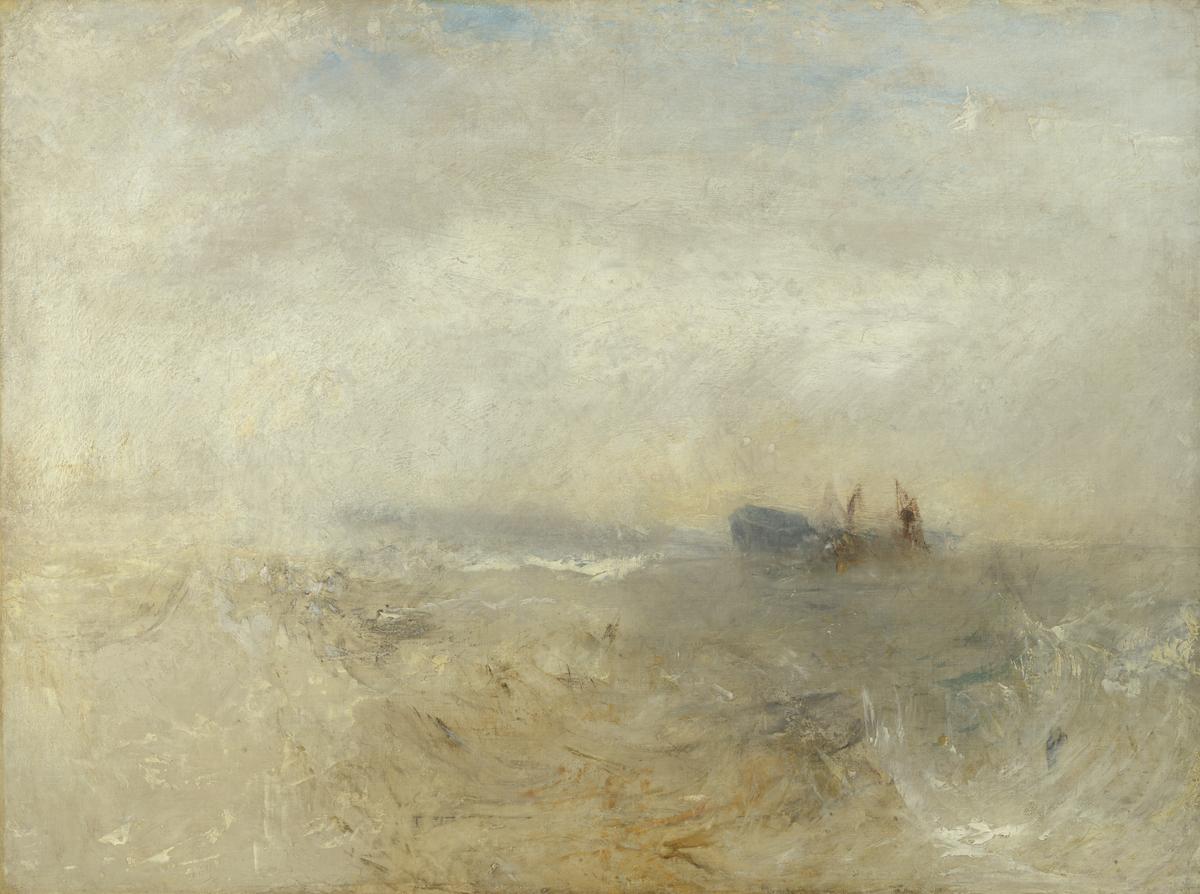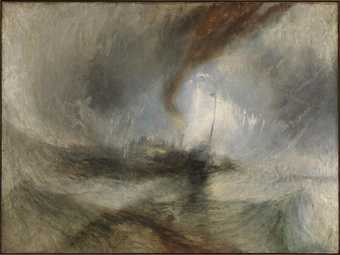6 rooms in JMW Turner
Turner was fascinated by the darker side to life at sea. He painted storms, shipwrecks and terrifying atmospheres over and over, leaving many of them unfinished
The sea swelled in Turner’s imagination during the last twenty years of his life. He painted it more frequently and more boldly, placing atmosphere centre stage. He wanted us to feel the sea’s power and volatility as if we were there, swept up in a swirling vortex of wind and waves or the foreboding bleak, open water.
His paintings of steamships and whale hunts showed how modern technology and marine industry could be painted with great profundity. Turner’s take on them as battles between man and nature brought a new dimension to the art of terror, the Sublime. To our eyes, polluting steamships and the hunting of whales might also open up questions about the environmental cost of humanity’s relationship with the sea. Turner’s depictions of shipwrecks highlighted how the faults and flaws of humankind could be the cause of maritime disasters, too.
In late life, Turner regularly visited the resort towns of the Kent coast, particularly Margate. He felt an affinity with mariners and allowed his neighbours in London to think he was a retired Admiral. On a visit to Turner’s studio, the US sea captain Elisha Ely Morgan is said to have seen ‘through all the fog and mystery’ ‘how much real sea feeling there was in him and his work’.
Art in this room
